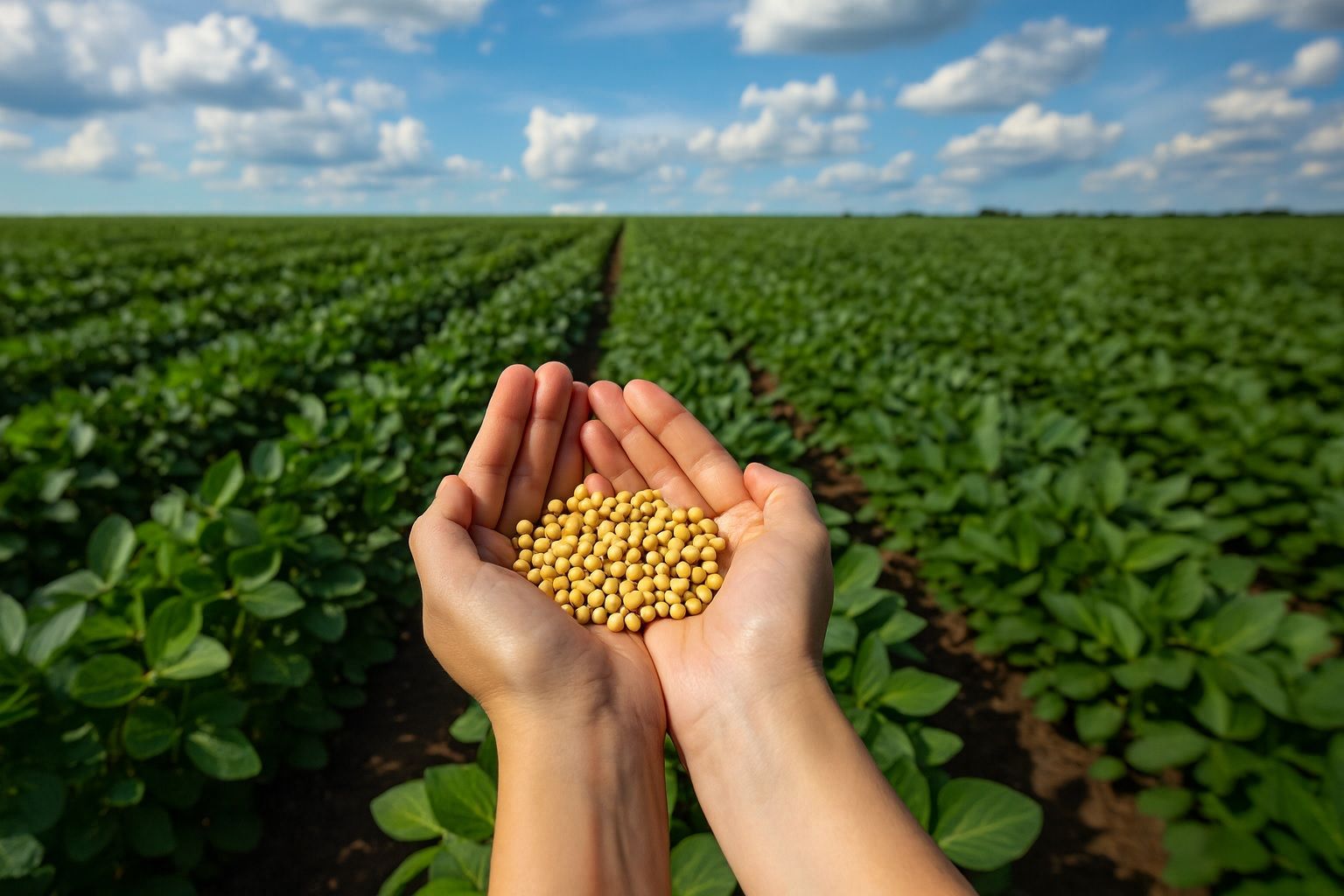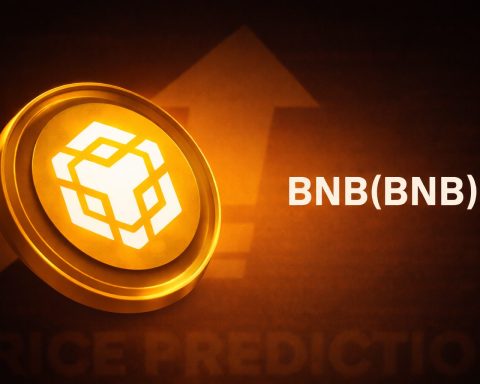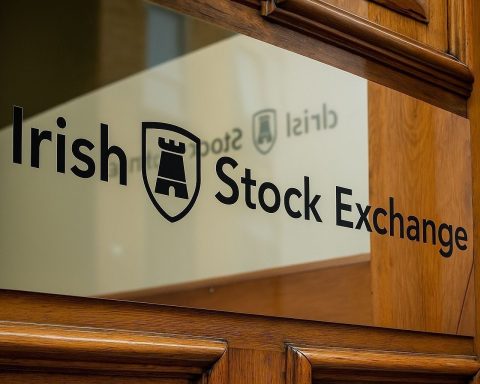- Record Harvest: Brazil’s crop agency Conab projects an all-time high 2025/26 soybean harvest – about 177.6 million metric tons (≈178 M), roughly 3–4% above 2024 [1].
- Expanded Acreage: Farmers are planting more land to soy: ~49.0 million hectares (121.1 M acres), up ~3.6% year-over-year [2] (Agri-Analysts’ own forecasts agree on ~121.2 M acres [3]).
- Rapid Start & Weather Risk: Planting got off to an unusually fast start – about 14% of the intended area was sown by mid-Oct. (the third-fastest pace on record) [4]. However, dry weather has already stalled progress in key regions. In top-producing Mato Grosso, farmers paused after only ~40% planted due to lack of rain [5] [6]. October rains (normally bringing ~70% of the crop) are now critical to avoid delays and yield loss.
- Export Boom: Brazilian exports are soaring. Grain exporters (ANEC) report 102.2 M tons shipped by end-Oct 2025 – already eclipsing full-year totals for 2023/24 [7]. ANEC sees total 2025 shipments reaching ~110 M tons by year-end [8]. This surge is driven by Chinese demand: China took an estimated 6.5 M tons from Brazil in Sept (≈93% of Brazil’s soybean exports) [9].
- China’s Demand Spike: China’s soybean imports jumped 13% in Sept (year-on-year), with Brazilian volumes up about +24% [10]. Overall, China “continues to be the main destination” and driving force for Brazilian soy [11], as U.S. shipments languish amid trade frictions.
- Price & Market Effects: U.S. futures have been under pressure. Chicago November soybeans traded near $10.03¼/bu on Oct 14 [12]. The ending of Argentina’s export tax waiver briefly lifted CBOT futures from 6-week lows [13], but TS2.tech notes U.S. bean prices “sank to multi-year lows” as Latin American output hit markets [14]. Analysts warned that Chinese buying of South American beans is “blowing a fresh hole” in U.S. sales [15] – U.S. Soybean Assoc. President Caleb Ragland laments “every time China turns to South America… our farm families here at home lose out” [16]. (The S&P GSCI Soybeans index stood around 405.7 on Oct 14 [17].)
Record Harvest and Acreage Surge
Brazil is poised for a soybean supercrop. Conab’s October report forecasts roughly 177.64 million tons in 2025/26, about 6 Mt above last year’s output [18]. This would shatter previous records. Conab notes the extra supply comes from a slight bump in area – about 49.0 M hectares (121.1 M acres) of soybeans, ~3.6% more than last year [19]. (FarmProgress confirms 121.2 M acres, +3.7% [20].) In the field, planting is already far advanced: Paraná state has seeded ~31% of its soy area, and even Mato Grosso ~19% [21]. In practice, this means Brazilian farmers have committed far more land and seed to soy than in recent years.
Reuters notes Brazil’s vast new crop in context: “A record soybean crop exceeding 170 million tons” was harvested in 2025 [22]. Exporter ANEC projects roughly 102.2 M tons exported by October’s end [23] (up from ~101.3 M last year) and ~110 M total by Dec. [24] – easily eclipsing any previous full-year export. In short, Brazil is about to harvest and ship the biggest soybean production in history, making it the world’s dominant supplier.
Rapid Planting, October Delays, and Weather Watch
Planting started strong, but a crucial dry spell has intervened. By October 9, roughly 14% of Brazil’s soybean area was sown [25] – the third-fastest planting pace on record, compared to ~9% the week before. This quick start was fueled by early rains, but lack of follow-up moisture has given farmers pause. In Mato Grosso (Brazil’s No.1 soy state) growers report “they’ve already planted 40% of their soybean crop, but they actually shut everything down and they’re waiting for more rain” [26]. As FarmProgress explains, the initial plantings had enough soil moisture to germinate, but farmers fear proceeding without October rains would risk emergence.
October is traditionally the heavy planting window (roughly 70% of Brazil’s crop goes in during October). Conab itself notes that “in most regions, the crop’s fallow period has already ended, and farmers are waiting for the rains to return, which should occur in the second half of October,” implying a big rain-dependent push ahead [27]. In effect, Brazil’s soybean sowing has raced out of the gate, then stalled – making October rains absolutely critical. If timely showers arrive as expected, analysts say yields should be strong; but if dry weather lingers, plantings could slip into November, threatening area and output [28] [29].
Export Boom on Chinese Demand
Brazil’s harvest is hitting markets at the perfect time for exporters. With U.S. farmers holding back amid low prices and trade tensions, China has turned almost entirely to Brazil for soybeans. ANEC data show China bought 6.5 million tons of Brazilian soy in September – a whopping 93% of Brazil’s total exports that month [30]. In aggregate, Brazilian shipments reached 102.2M tonnes by Oct 31 [31], already beating last year’s annual totals. ANEC projects about 110M tonnes will ship in 2025, making it the biggest export year ever for Brazil [32].
This export surge is driven by Chinese demand. Bank of America analysts note Chinese September soybean imports jumped 13% year-over-year, led by a +24% spike in purchases from Brazil [33]. In contrast, U.S. exports to China have cratered. Reuters quotes ANEC: “China continues to be the main destination and drive for Brazilian soy shipments,” reinforcing the country’s outsized role [34]. As a result, Brazil alone is on track to supply well over half of global soybean trade this season – largely thanks to Chinese buyers shunning U.S. supply.
Market Impact and Price Trends
These developments have rippled through global markets. U.S. prices have softened under the weight of extra supply. On Oct. 14, Chicago Board of Trade November soybeans were about $10.03¼ per bushel [35] – near recent 3–4 year lows. Trading data show USDA is expecting record U.S. corn and soybean stocks this fall, adding downward pressure [36]. TS2.tech’s market analysts note U.S. soy futures “stayed under pressure” as Chinese buyers raced to South America [37]. Chicago futures even “sank to multi-year lows this week” amid the Latin American supply onslaught [38].
News of Argentine policy changes briefly jolted prices: after Argentina ended its soybean export tax waiver, U.S. soy futures ticked up from six-week lows (~$10.05) to about ~$10.15 [39]. But the overall trend is bearish for U.S. farmers. One grain broker warned that Chinese deals with Brazil and Argentina were “blowing a fresh hole” in U.S. export prospects [40]. U.S. Soybean Assoc. President Caleb Ragland summed it up: “Every time China turns to South America instead of the U.S.… our farm families here at home lose out,” [41] a reflection of the shifting demand.
In commodities indices, soybeans have underperformed. The S&P GSCI Soybeans index was about 405.66 on Oct 14 [42], roughly flat-to-down for the week (and only ~+1.1% year-to-date). For comparison, other indices like oil and gold have surged recently. The U.S. dollar’s strength and high global crop output have also capped gains for commodities like soy. TS2 even remarks that U.S. soybean acreage is “large” but exports are “depressed by trade friction” [43], highlighting how political factors (the U.S.–China tariff war) are redirecting commerce.
Expert Views and Outlook
Looking ahead, most analysts see Brazil’s looming harvest as bullish globally. Conab itself noted that “if rainy weather returns… Brazilian soybean production will likely set another record” [44]. The agency and industry forecasters are watching weather closely, since October rains could make or break yields. Many expect the tight U.S.–China situation to persist: China is reportedly still planning a presidential meeting in late October, which traders hope could ease frictions [45], but concrete progress is uncertain.
Agricultural inputs also matter: TS2 points out that high fertilizer and fuel costs are squeezing farmers worldwide [46]. Any relief (e.g. tariff resolutions or input price drops) could quickly change the picture. For now, Brazil’s soybean outlook is eye‑poppingly strong. Even as U.S. farmers plant record acres, they face slack demand from China, while Brazilian farmers prepare to ship the largest crop ever. How prices settle will depend on October weather in South America, the U.S.–China trade path, and new-crop yields. But the message is clear: Brazil is set to dominate the 2025/26 soybean market, reshaping global supply and prices [47] [48].
Sources: Conab estimates [49]; Reuters/ANEC export data [50] [51] [52]; AgRural/TradingView planting reports [53]; FarmProgress analysis [54] [55]; USDA/trading news via Agriculture.com [56] [57]; TS2.tech commodities analysis [58] [59] [60] [61]. (For full context and updates, see cited links.)
References
1. www.tradingview.com, 2. www.tradingview.com, 3. www.farmprogress.com, 4. www.tradingview.com, 5. www.farmprogress.com, 6. farm.co.za, 7. www.reuters.com, 8. www.reuters.com, 9. www.reuters.com, 10. www.agriculture.com, 11. www.reuters.com, 12. www.agriculture.com, 13. ts2.tech, 14. ts2.tech, 15. ts2.tech, 16. ts2.tech, 17. www.marketscreener.com, 18. www.tradingview.com, 19. www.tradingview.com, 20. www.farmprogress.com, 21. www.tradingview.com, 22. www.reuters.com, 23. www.reuters.com, 24. www.reuters.com, 25. www.tradingview.com, 26. www.farmprogress.com, 27. www.tradingview.com, 28. www.farmprogress.com, 29. farm.co.za, 30. www.reuters.com, 31. www.reuters.com, 32. www.reuters.com, 33. www.agriculture.com, 34. www.reuters.com, 35. www.agriculture.com, 36. ts2.tech, 37. ts2.tech, 38. ts2.tech, 39. ts2.tech, 40. ts2.tech, 41. ts2.tech, 42. www.marketscreener.com, 43. ts2.tech, 44. www.farmprogress.com, 45. www.tradingview.com, 46. ts2.tech, 47. www.tradingview.com, 48. www.reuters.com, 49. www.tradingview.com, 50. www.reuters.com, 51. www.reuters.com, 52. www.reuters.com, 53. www.tradingview.com, 54. www.farmprogress.com, 55. www.farmprogress.com, 56. www.agriculture.com, 57. www.agriculture.com, 58. ts2.tech, 59. ts2.tech, 60. ts2.tech, 61. ts2.tech










